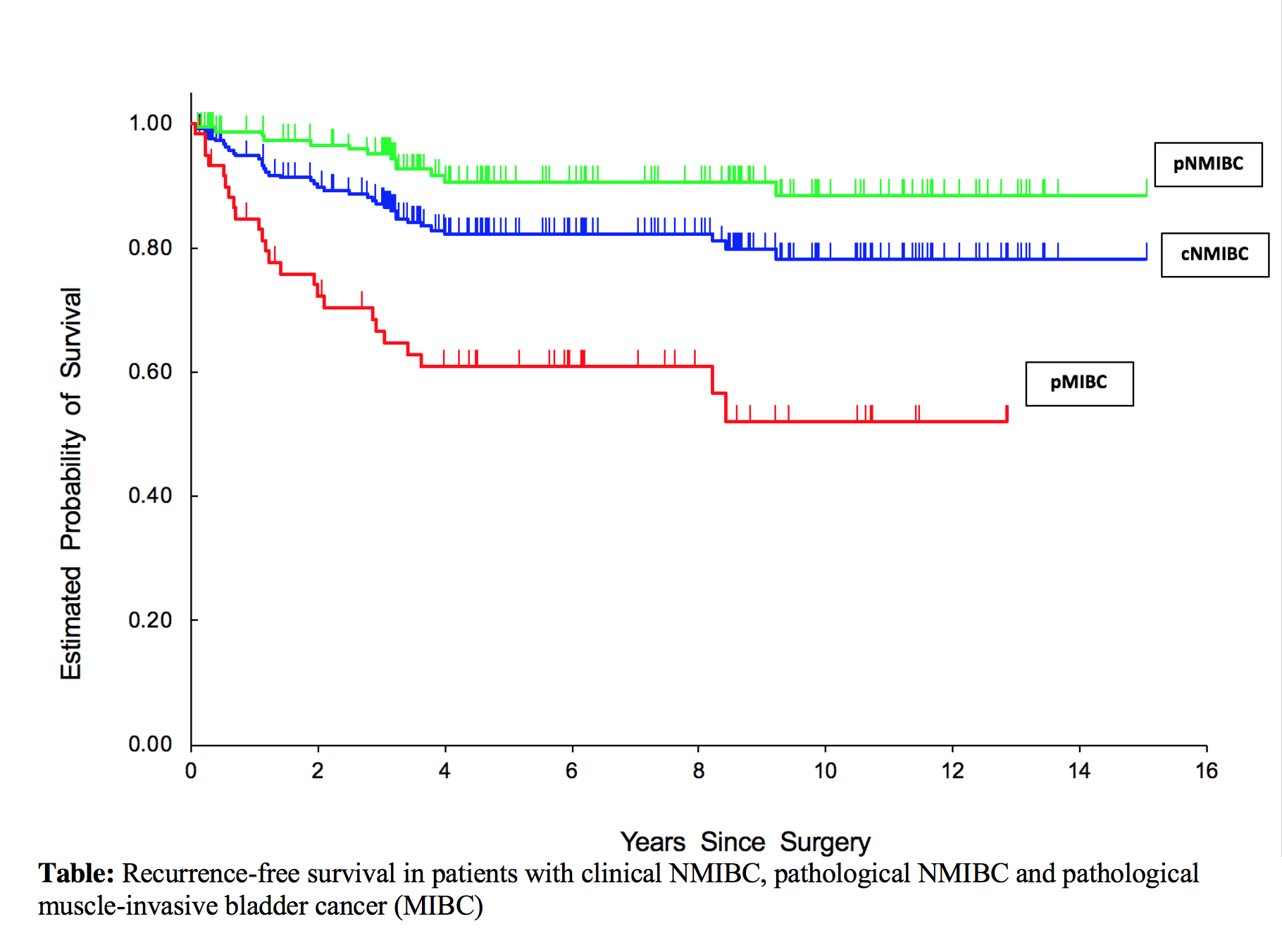Back
Poster, Podium & Video Sessions
Moderated Poster
MP59: Bladder Cancer: Non-Invasive III
MP59-18: Incidence and Outcomes of Nodal Metastasis in Clinically Non-Muscle Invasive Bladder Cancer
Monday, May 16, 2022
1:00 PM – 2:15 PM
Location: Room 225
Muhannad Alsyouf*, Sanam Ladi Seyedian, Alireza Ghoreifi, Antoin Douglawi, Jie Cai, Gus Miranda, Sumeet Bhanvadia, Anne Schuckman, Hooman Djaladat, Siamak Daneshmand, Los Angeles, CA
- MA
Muhannad Alsyouf, MD
University of Southern California
Poster Presenter(s)
Introduction: Radical cystectomy (RC) is recommended in NMIBC patients with high risk of progression or persistent disease despite intravesical therapy. The role and extent of lymphadenectomy is controversial and not universally performed in this population. The objective of this study is to evaluate the incidence and pattern of nodal metastasis in patients undergoing radical cystectomy for treatment of clinically non-muscle invasive bladder cancer.
Methods: Prospectively collected data of patients who underwent RC and ‘super-extended’ LND with intent-to-cure for urothelial carcinoma of the bladder between 2002 and 2019 were examined. Inclusion criteria were(a) clinical stage Ta, Tis, or T1, (b) muscle present and not involved, (c) no prior diagnosis of T2 disease, (d) no prior systemic or radiation therapy, and (e) super-extended lymphadenectomy performed to level of IMA with mapping information available. Logistic regression analysis was used to evaluate for predictors of node metastasis.
Results: A total of 223 patients met inclusion criteria with a median follow up of 8.2 years (IQR 4.1-10.7). Lymph node metastasis was identified in 8.1% (18/223) of the cohort. Nodal metastasis was present in 0 patients with cTis, 0 patients with cTa, and 11.6% (18/155) of patients with cT1 disease. Of the 18 patients with LNM in cT1 disease, 61% (11/18) had positive nodes below the common iliac bifurcation, 6% (1/18) had positive nodes below the aortic bifurcation, and 33% (6/18) had distant metastasis to lymph nodes proximal to the aortic bifurcation. No skip metastasis were identified. After RC, 89% of cT1 with nodal metastasis were upstaged to muscle-invasive disease. On logistic regression analysis, presence of LVI on TURBT specimen was a significant predictor of LNM (OR 6.8, CI 2.2-20.9). Five-year RFS was 91%, 82%, and 61% in patients with pNMIBC, cNMIBC, and pMIBC, respectively.
Conclusions: Routine lymph node dissection is necessary in patients undergoing radical cystectomy for cT1 disease due to risk of upstaging and LNM. Presence of LVI in TURBT specimen of cNMIBC is a predictor of nodal metastasis. In patients with nodal disease, metastasis beyond the limits of a standard lymph node template occurred in two-thirds of patients, however a standard pelvic node dissection would have identified all patients with node positive disease.
Source of Funding: None

Methods: Prospectively collected data of patients who underwent RC and ‘super-extended’ LND with intent-to-cure for urothelial carcinoma of the bladder between 2002 and 2019 were examined. Inclusion criteria were(a) clinical stage Ta, Tis, or T1, (b) muscle present and not involved, (c) no prior diagnosis of T2 disease, (d) no prior systemic or radiation therapy, and (e) super-extended lymphadenectomy performed to level of IMA with mapping information available. Logistic regression analysis was used to evaluate for predictors of node metastasis.
Results: A total of 223 patients met inclusion criteria with a median follow up of 8.2 years (IQR 4.1-10.7). Lymph node metastasis was identified in 8.1% (18/223) of the cohort. Nodal metastasis was present in 0 patients with cTis, 0 patients with cTa, and 11.6% (18/155) of patients with cT1 disease. Of the 18 patients with LNM in cT1 disease, 61% (11/18) had positive nodes below the common iliac bifurcation, 6% (1/18) had positive nodes below the aortic bifurcation, and 33% (6/18) had distant metastasis to lymph nodes proximal to the aortic bifurcation. No skip metastasis were identified. After RC, 89% of cT1 with nodal metastasis were upstaged to muscle-invasive disease. On logistic regression analysis, presence of LVI on TURBT specimen was a significant predictor of LNM (OR 6.8, CI 2.2-20.9). Five-year RFS was 91%, 82%, and 61% in patients with pNMIBC, cNMIBC, and pMIBC, respectively.
Conclusions: Routine lymph node dissection is necessary in patients undergoing radical cystectomy for cT1 disease due to risk of upstaging and LNM. Presence of LVI in TURBT specimen of cNMIBC is a predictor of nodal metastasis. In patients with nodal disease, metastasis beyond the limits of a standard lymph node template occurred in two-thirds of patients, however a standard pelvic node dissection would have identified all patients with node positive disease.
Source of Funding: None


.jpg)
.jpg)